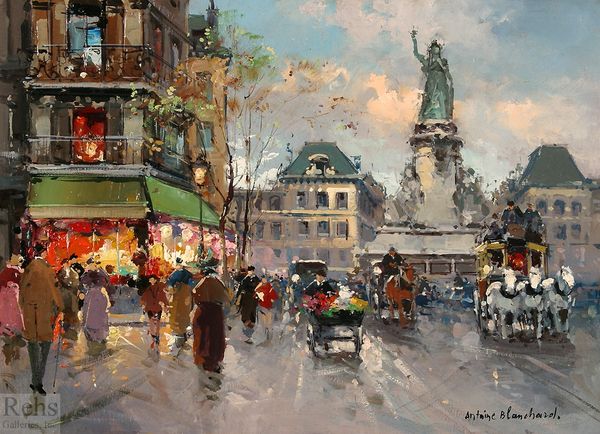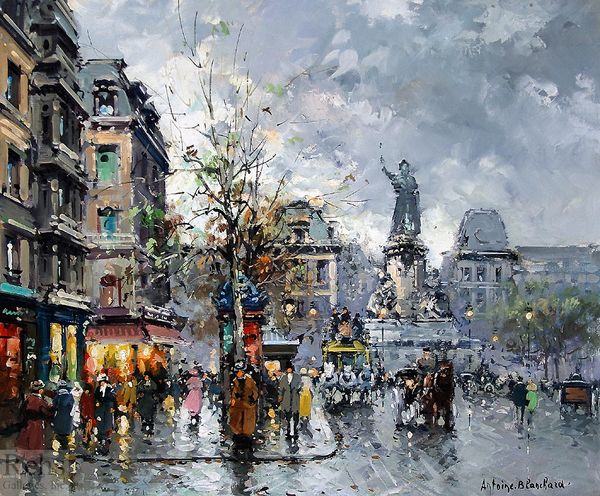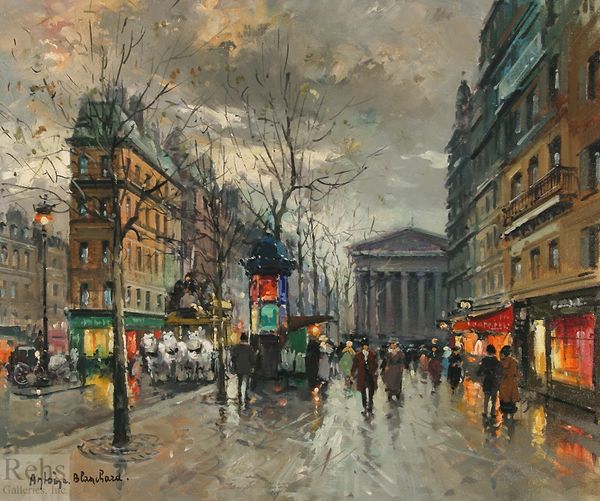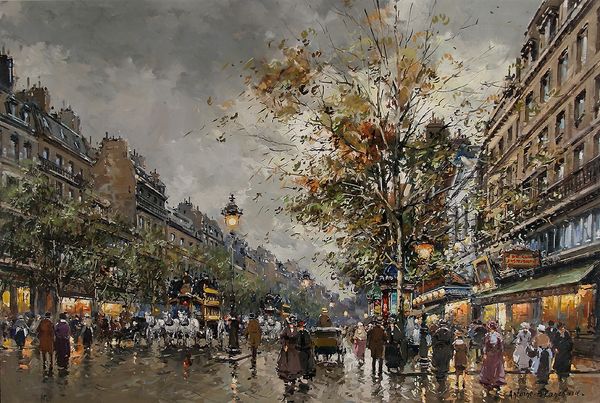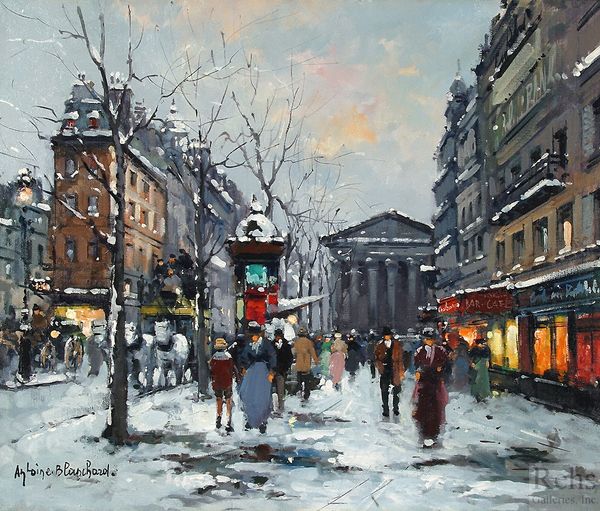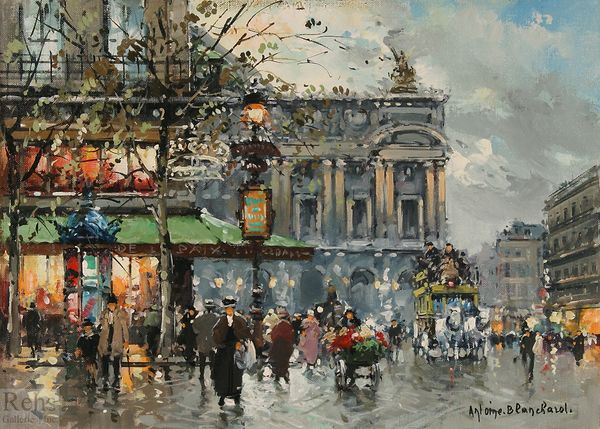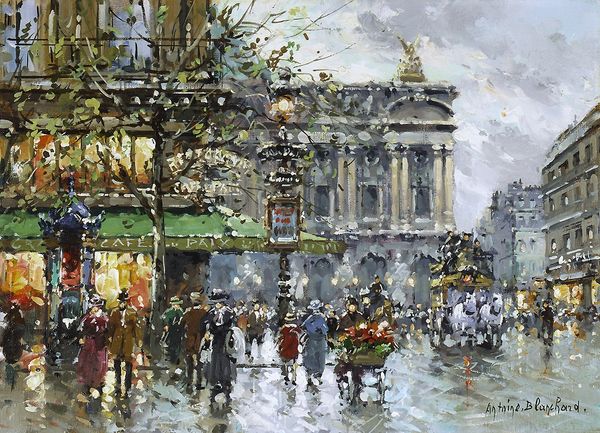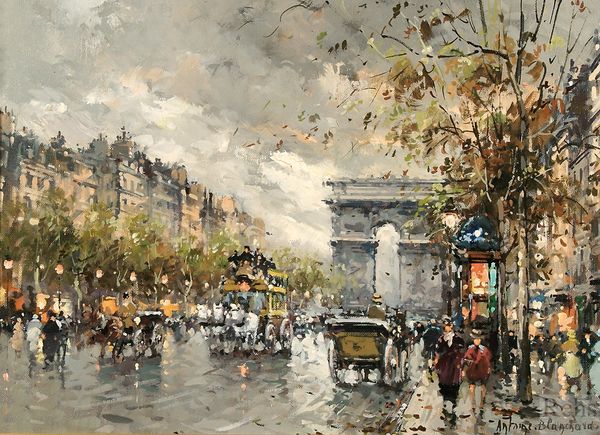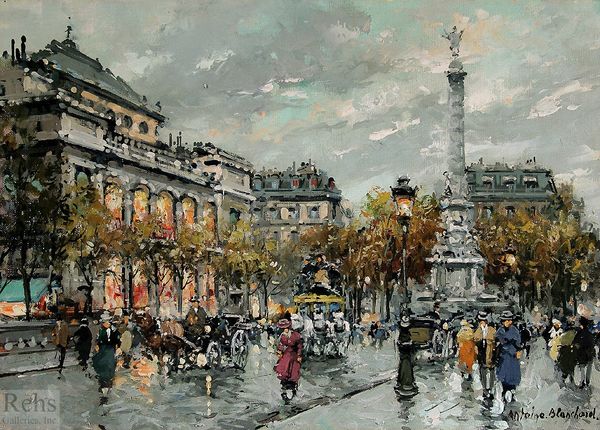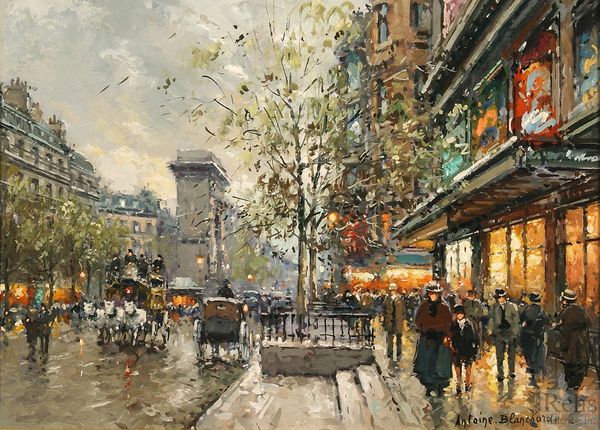
painting, oil-paint
#
cityscape
#
painting
#
impressionism
#
oil-paint
#
landscape
#
figuration
#
oil painting
#
cityscape
#
building
Copyright: Antoine Blanchard,Fair Use
Curator: Right away, I feel a hushed expectancy. The muted greys and browns evoke a quiet city moment. Editor: This is “Place de la Republique,” by Antoine Blanchard. It’s rendered with oil paints, using impressionistic techniques. Look at how the buildings frame the central monument and bustling street activity. For me, it’s about capturing a slice of Parisian life, right there on the canvas. The means by which he portrays such scene interests me, it makes it so accessible for consumption. Curator: Indeed. Notice how the statue in the square is rendered, its significance elevated by the artist. Blanchard’s rendering places the monument within a specific visual language, connecting it to ideas of civic pride. Also consider how light plays throughout the canvas. Can you see how it adds depth? Editor: Absolutely! You can almost smell the damp cobblestones! I find myself focusing on the surface, on the application of the paint. How the quick, loose brushstrokes contribute to that almost blurry, dreamlike impression. Think about the relative cost of oil paints and canvases during this time, as well as their increased availability and relation to artistic output and increased artistic scenes... Curator: That hazy, soft atmosphere brings forward the continuity of shared urban experiences across eras. What does a modern viewer feel looking back at what Blanchard chose to represent as valuable to Parisian life? Editor: The people are almost indistinguishable blobs of color! The focus clearly isn't on portraiture but on conveying the sense of movement, the collective experience of city life, where labor is mostly erased for romantic strolls. The figures almost become part of the materials surrounding them. Curator: The very act of Blanchard depicting this recognizable place—the Place de la Republique—reinforces a particular French identity. These kinds of everyday scenes carry powerful messages of belonging. The artist helps create a visual archive of shared memory, you might say. Editor: And what kind of consumer and lifestyle does such act reveal? These artworks reinforce social memory through repeated acts of creation and consumption, allowing these memories to be further etched and reinforced in material form... Well, these scenes make one crave a croissant! Curator: Yes! This was more enlightening than my initial expectations. Editor: Same. Considering material circumstances really allowed me to frame these artworks in relation to broader economic considerations.
Comments
No comments
Be the first to comment and join the conversation on the ultimate creative platform.

